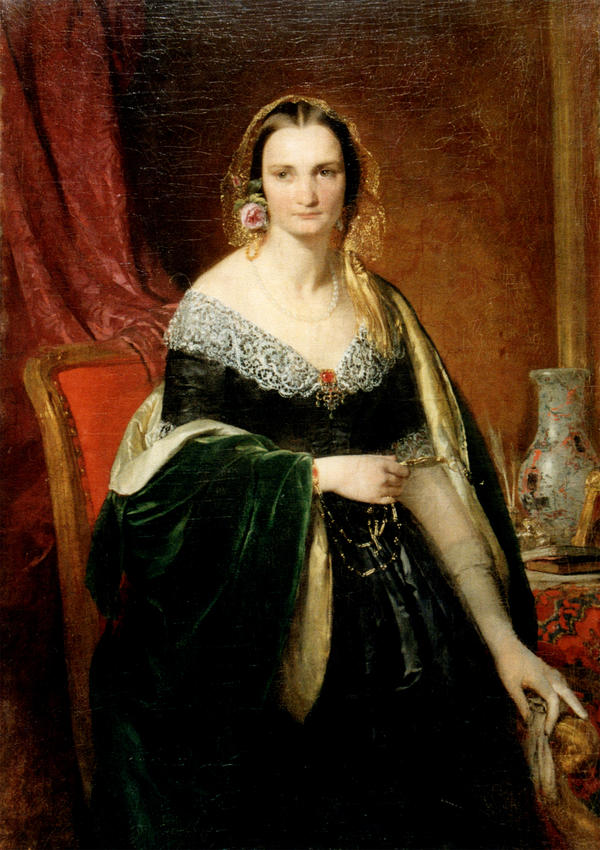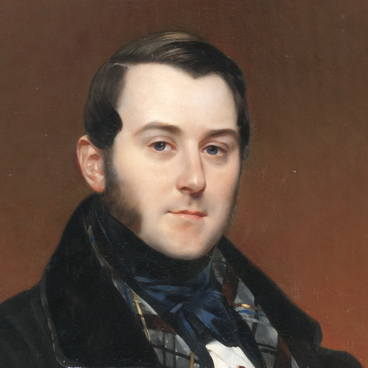The portrait of Elizaveta Nikolaevna Krivtsova gives a vivid idea of the salon portraiture, which became popular among aristocratic customers by the middle of the 19th century. The authorship of the portrait is attributed to German painter Franz Xaver Winterhalter, who gained fame among representatives of the noble families in many European countries. Portraying Elizaveta Nikolaevna, the artist did not stint on decorative details, trying to impress the viewer by skillfully conveying the variety and play of the textures of the velvet cape, satin dress, lace collar, porcelain vase. The viewer’s eye is constantly distracted by numerous accessories – a rose in the hair, a string of pearls, a bright ruby brooch, a silver lornet, a like glove. All these attributes of luxury are designed to emphasize the refined taste of Krivtsova and her aristocracy, which was the task of the authors of such portraits.
The artist’s origins were in Germany, where he was educated, graduating from the Academy in Munich; from the mid-1830s he gained fame and worked as a court portrait painter of French monarchs Louis Philippe and Napoleon III. Portraits by Winterhalter, Dubufe and other painters close to them were very successful in high society. “Ladies have been waiting their turn for months to get to the Winterhalter and Dubufe studios”, Alexander Dumas stated in 1859, “they are listed, they have their numbers and wait – one waits for a year, another for eighteen months, and the third for two years. The most titled have advantages. All the ladies dream of having a portrait painted by Winterhalter or Dubufe in their boudoir”.
Such glossy compositions were usually exhibited at the Paris Art Salon, the largest annual official exhibition. The jury of the Salons actively supported art, the basis of which was the eclecticism of the creative method, based primarily on the norms of academism, as well as using external methods of romanticism. Art, dominated by the effectiveness of the composition with the straightforward interpretation of significant themes, the formal virtuosity of performance, combined with excessive pathetics and idealization of characters, began to be called salon. One of the most famous representatives of salon art of the mid-19th century was Franz Xaver Winterhalter.



